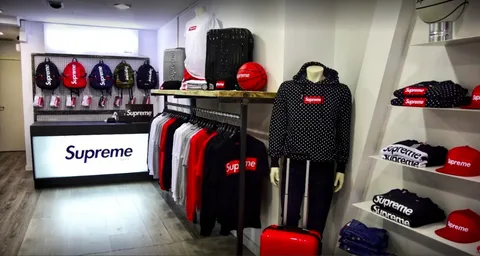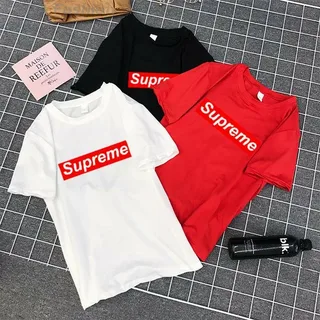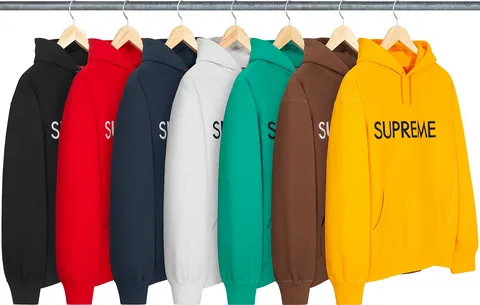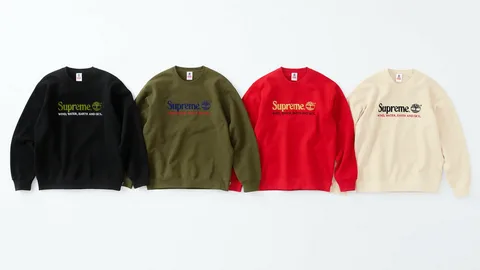Introduction to Supreme Clothing:
One brand immediately comes to mind when you think of streetwear: Supreme. Since its humble beginnings as a small skate shop in New York City, Supreme Clothing has evolved into one of the world’s most sought-after and recognizable brands. Known for its limited releases, iconic collaborations, and the unmistakable red box logo, Supreme Clothing has become a cultural symbol that transcends fashion. But how did it all start, and what makes Supreme Clothing so special? Let’s dive into the story of Supreme Clothing.
The Origins of Supreme:
Founded in 1994 by James Jebbia, Supreme started as a skate shop on Lafayette Street in Manhattan. What set it apart from other skate brands was its commitment to authenticity. Jebbia wasn’t just creating a store; he was creating a space where skaters could feel at home. The layout of the shop was designed to cater to skateboarders, with ample room to skate inside.
The Supreme Logo: A Fashion Icon
Arguably, one of the most recognizable logos in fashion is Supreme’s red box logo. Simple yet powerful, it has become a symbol of status in streetwear culture.
Understanding the Importance of the Red Box Logo
Barbara Kruger’s art inspires the red box logo and uses bold white text on a red background. This minimalist design has become iconic, and its placement on Supreme’s products has turned otherwise basic items into must-have pieces. The logo itself has driven much of the brand’s popularity and demand.
Supreme’s Expansion Beyond Clothing
While Supreme is best known for its clothing, the brand has ventured into accessories and other items. From skateboards to nunchucks to bricks (yes, actual bricks!), Supreme has expanded its product offerings in ways that defy traditional retail logic.
Supreme’s Influence in Other Markets:
By stepping into different product categories, Supreme has extended its reach into lifestyle and art markets. The brand’s accessories are often seen as collectibles, and some, like the Supreme Brick, have become almost mythical in their rarity and resale value.
Supreme Stores Around the World
Supreme has opened flagship stores in major cities like New York, Los Angeles, Paris, Tokyo, and London. Each location has its own unique design and often features artwork from local artists.
The In-Store Experience for Buyers
Part of the Supreme shopping experience is the ritual of lining up for drops. Supreme stores often have long lines of fans waiting to get their hands on the latest release, making the in-store experience feel exclusive and exciting.
The Future of Supreme Clothing
In 2020, VF Corporation, the parent company of brands like The North Face and Vans, acquired Supreme Clothing for $2.1 billion. While some fear that this could lead to commercialization, others see it as a sign that Supreme will continue to grow.
Supreme After Being Acquired by VF Corporation
Since the acquisition, Supreme has maintained its approach to limited drops and collaborations. However, there are signs that the brand may expand its product offerings even further.
Conclusion
Supreme isn’t just a brand—it’s a cultural movement. From its beginnings as a skate shop to its current status as a global fashion icon, Supreme has redefined what it means to be a streetwear label. Its influence on fashion, art, and youth culture is undeniable, and its ability to stay relevant in an ever-changing world is a testament to its genius.
Frequently Asked Questions (FAQs)
- What makes Supreme so popular?
Supreme’s popularity comes from its unique blend of streetwear, its limited product releases, and its high-profile collaborations with major brands and artists. - Why are Supreme items so expensive?
The limited supply of Supreme products creates high demand, which leads to increased resale prices. The brand also collaborates with luxury brands, adding to the value. - What is the Supreme resale market?
Supreme’s resale market is where fans buy and sell limited-edition items, often for much higher prices than the original retail cost. - Who owns Supreme now?
Supreme was acquired by VF Corporation in 2020 for $2.1 billion. - What does the Supreme logo mean?
The Supreme red box logo is inspired by artist Barbara Kruger’s work and has become a symbol of streetwear culture and exclusivity.




